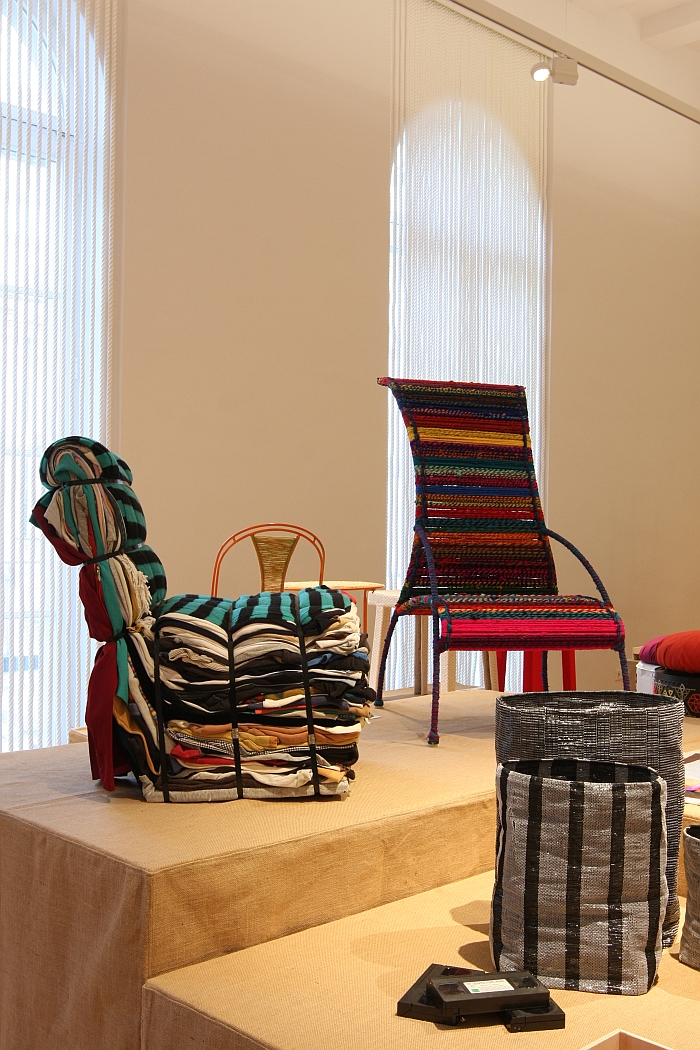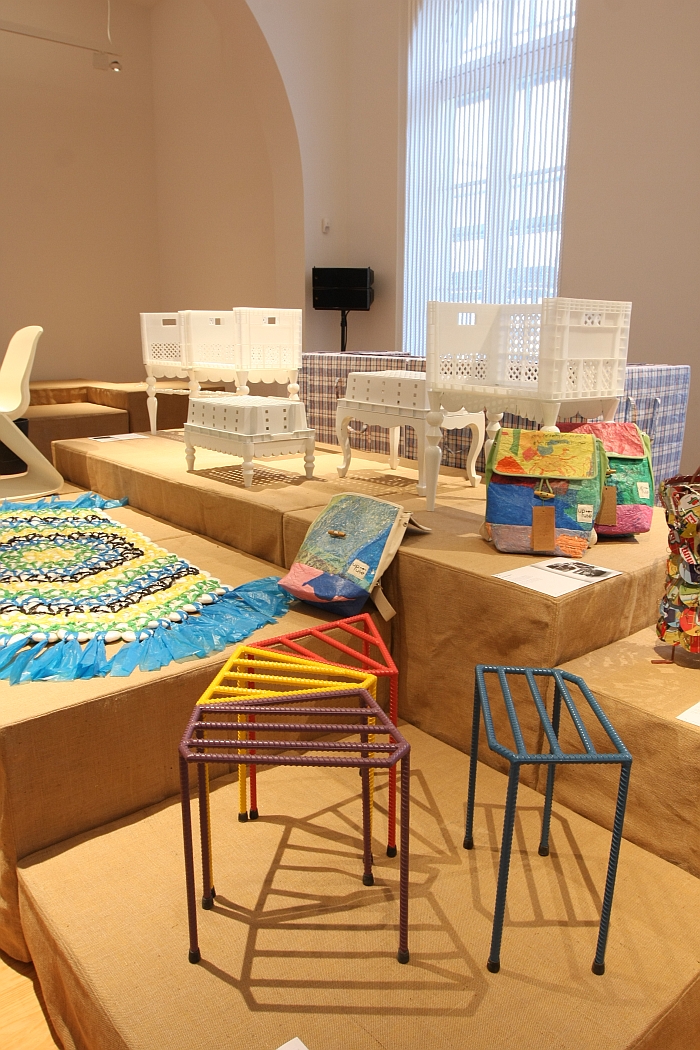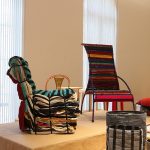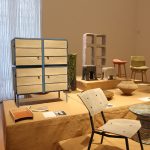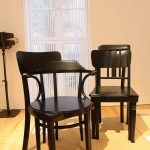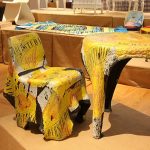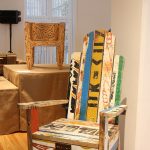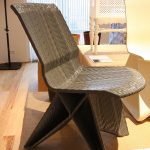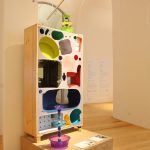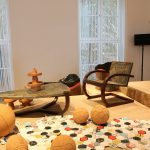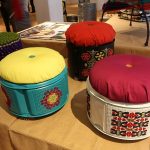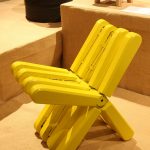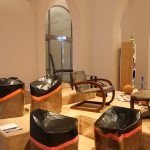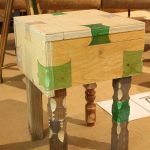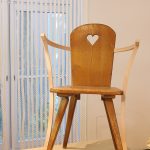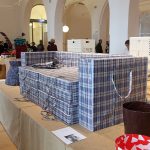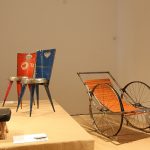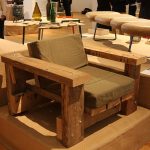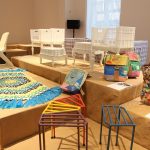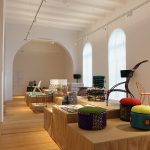Pure Gold. Upcycled! Upgraded! @ Museum für Kunst & Gewerbe Hamburg
As the old proverbs teach us, Waste Not, Want Not!
And, all that (g)litters is gold!
With the exhibition Pure Gold. Upcycled! Upgraded! the Museum für Kunst & Gewerbe Hamburg not only demonstrate the inherent value that can exist in apparent waste, but also how understanding that inherent value could help us reduce future waste problems.
Realised in context of the 100th anniversary celebrations of the German cultural exchange organisation, the Institut für Auslandsbeziehungen, IFA, Pure Gold. Upcycled! Upgraded! presents some 76 objects by 53 designers/studios, objects which encompass a broad spectrum of not only upcycling, but also recycling, refining, novel materials and readymades.
Conceived as a travelling exhibition Pure Gold is as global in its selections as in its aspirations: in addition to lead curator, and exhibition concept developer, Volker Albus, six international curators have selected works from their specific, specialist, regions to create a truly international overview of contemporary upcycling/recycling/materials.
Back in February, at Ambiente Frankfurt we stuck our necks out quite a long way and set our definition of what constitutes sensible, meaningful, valid upcycling, namely that it must “not only create an object of genuine value, integrity and longevity, but also carry the message of what it is doing with it. Not in a preaching sense, but comprehensibly”
By virtue of the very nature of the exhibition, Pure Gold caused us to reflect on that position. It was in many regards our starting point. A slightly egocentric starting point we’ll grant you, but it seemed the most logical way to approach the subject.
And pleasingly several of the projects presented in Pure Gold matched our definition, including the likes of Starfish Chair by Wang Shumao, which uses salvaged office chair star bases to create thoroughly charming low stools, or Tejo Remy’s ever majestic Rag Chair, a chair composed of rags i.e. old clothes and textiles, while others, perhaps most notably El Ultimo Grito’s Free Range stools, essentially cardboard boxes squashed into chairs and reinforced with a fibreglass plastic or the Bamboo Mat Bag by Wei Minghui, neatly challenged our position, proposing as they do that one can move away from the “carry the message of what it is doing” element without detracting from the project.
The value, integrity and longevity elements remain however central. And can be found throughout the majority of the upcycling projects on display.
Something which is very pleasing, as for us it means that the curators have avoided a lot of the lifestyle trend tat that urban makers tend to hawk as upcycling and have instead focussed on objects and projects with a little more concept and philosophy behind them, where the designers have considered what they are doing and why, rather than what might sell.
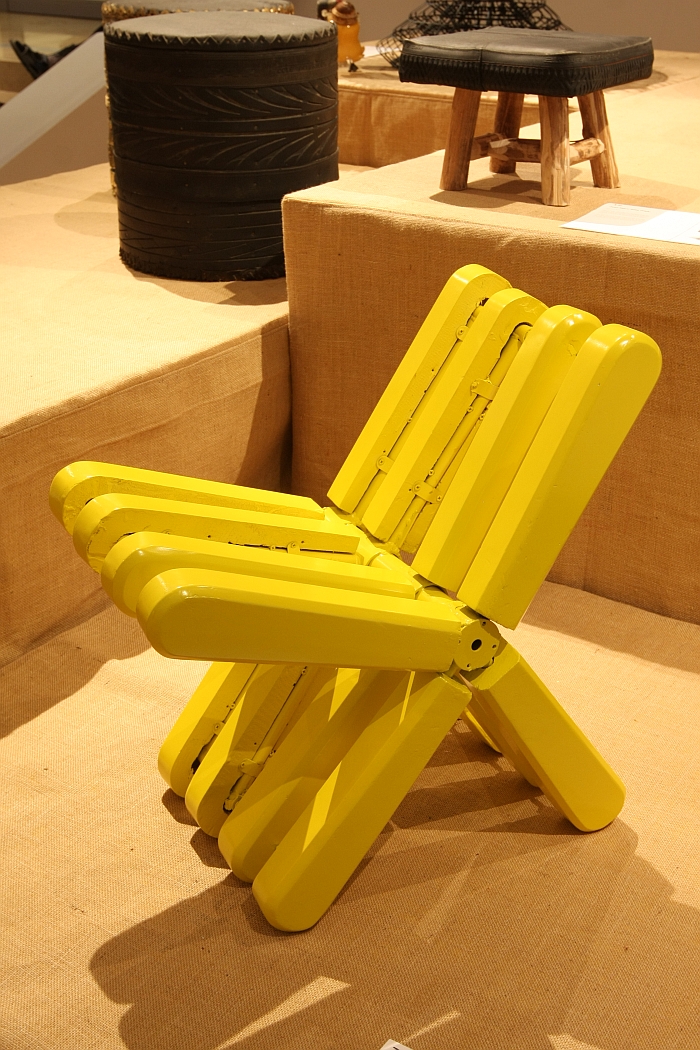
Starfish Chair by Wang Shumao, as seen at Pure Gold. Upcycled! Upgraded!, Museum für Kunst & Gewerbe Hamburg
Interesting and engaging as the upcycling objects are, perhaps more interesting is those objects of value, integrity and longevity not on display.
The objects on show in Pure Gold are, largely when not exclusively, what one could/must term consumer objects, often very expensive western consumer objects. And often more decorative objects than practical objects. And so not objects such as those presented, for example, in the exhibition Made in Slums – Mathare Nairobi whose genesis lay/lies in the needs of the communities. In the daily realities of life in Nairobi’s second largest slum. And which are thus pure gold for the communities
With objects such as Dogon Stools by Hamed Hamed Ouattara created from oil drums, or the Palmarin armchair by Ramón Llonch/Artlantique which turns old fishing boats into chairs, there were projects with a social component, but not objects of acute daily need.
If, as the curators claim, upcycling crosses cultural borders then they have to show that it also crosses such “need” borders, is also about daily survival and not just enriching daily life
The lack of such projects doesn’t detract from Pure Gold, but their presence could make it more valuable.

Dogon Stool by Hamed Ouattara and Rocking Chair by Dhara Kabaria/Studio Alternatives, as seen at Pure Gold. Upcycled! Upgraded!, Museum für Kunst & Gewerbe Hamburg
Beyond upcycling, Pure Gold also presents examples of a more, classic, recycling nature, including the ISH project from Laetitia de Allegri and Matteo Fogale which turns old jeans into a base material and Dirk Vander Kooij’s Endless Chair, an object and designer to which regular readers of these pages will need no further introduction; and also presents examples of how existing products can be enriched and thereby enjoy extended lifetimes and a new sense of purpose, something perhaps most elegantly demonstrated by breadedEscalope’s Stabelle, überarbeitet, which through a very simple intervention sees a traditional rustic, Bauernstuhl, transformed into a wonderful faux-modernist armchair and Silvia Knüppel’s two Frankfurter Mélange chairs in which damaged “classic” chairs are fused to create objects with a new identity and a whole new character.
A particularly pleasing aspect of Pure Gold is those projects which concern themselves with new materials, be it those such as Mieke Meijer’s Newspaperwood, newspaper processed into a plywood-esque material, and thus in many regards a development of the recycling principle, or those involving completely new materials such as Alafuro Sikoki-Coleman’s H++ project which uses water hyacinths as the basis for a rope like material, and a project which reminded us greatly of the Reepwerk projects we saw at Burg Giebichenstein Halle on our recent #campustour, utilising as they both do water weeds as a material.
And in terms of new materials a special mention must also go to Joining Bottles by Micaella Pedros, a project which we’ve read about a lot, but saw in the flesh for the first time in Hamburg. Essentially Micaella uses strips of PET bottles as connectors to create furniture objects; the wood being held together by the tautness of the heat-shrinked plastic. Fascinating and delightful as the project is and was, it is still one of these upcycling/recycling projects that bothers us because we passionately believe we should be trying to move away from PET bottles, not finding ever more uses for them. But despite that, a genuine delight.
Aside from the charms and intelligence of many of the projects what we found particularly interesting with the recycling and new materials projects is the possibilities they open up towards allowing us to, at least begin, to move towards more sustainable forms of global production.
A movement the exhibition format tacitly supports.
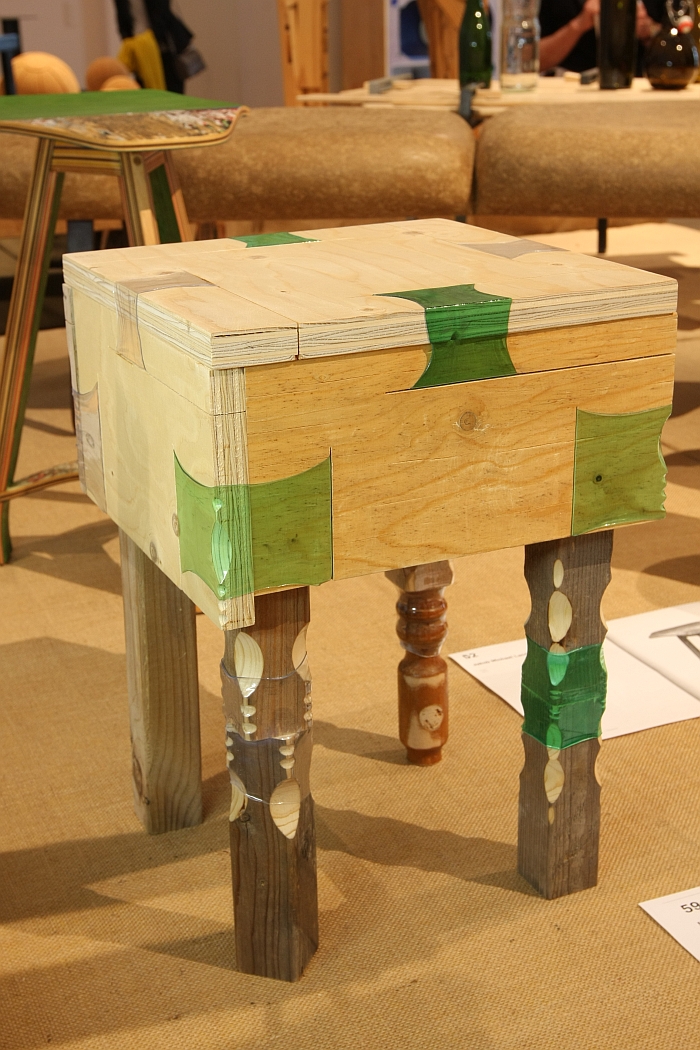
Joining Bottles by Micaella Pedros, as seen at Pure Gold. Upcycled! Upgraded!, Museum für Kunst & Gewerbe Hamburg
Complementing the presentation of the objects each stage of the Pure Gold exhibition tour will host workshops aiming to explore local/regional upcycling/recycling methods. Conceived as a project by Axel Kufus the intention is that each workshop will create a short video presentation of their methods and that over time the Pure Gold website will develop into a virtual platform for making, upcycling and recycling.
And thus a component of the exhibition which on the one hand empowers us all to be more active, proactive even, in terms of upcycling, recycling, repairing, demonstrating that it is something we can all do and not alone the domain of designers, while also neatly underscoring the fact that many of the objects in the exhibition offer the possibility of low-cost, low-tech, local production.
Or put another way.
If we accept, as we tend to, that industrial production not only produces objects which by necessity have a limited lifespan, but is in itself resource heavy, and thus waste heavy, not just in terms of production materials but also in terms of running factories, distributing goods, marketing, sales, whatever: then tackling questions of waste means rethinking means of production
Through the relative ease of establishing local, decentral, production based around relatively simple technology and using waste materials that can be sourced everywhere, and which will invariably always be available, one has the opportunity to create local jobs for local production and thus move away from the current focus of international trade in household and consumer goods, while maintaining reliable sources of income for the designers and creatives developing the processes. And meaningfully utilising that local, unavoidable waste. Without overly deplenishing natural resources or manufacturing new synthetics.
Upcycling and upgrading industry as much materials and objects.
And thus we finally reach the heart, if not soul, of the exhibition.
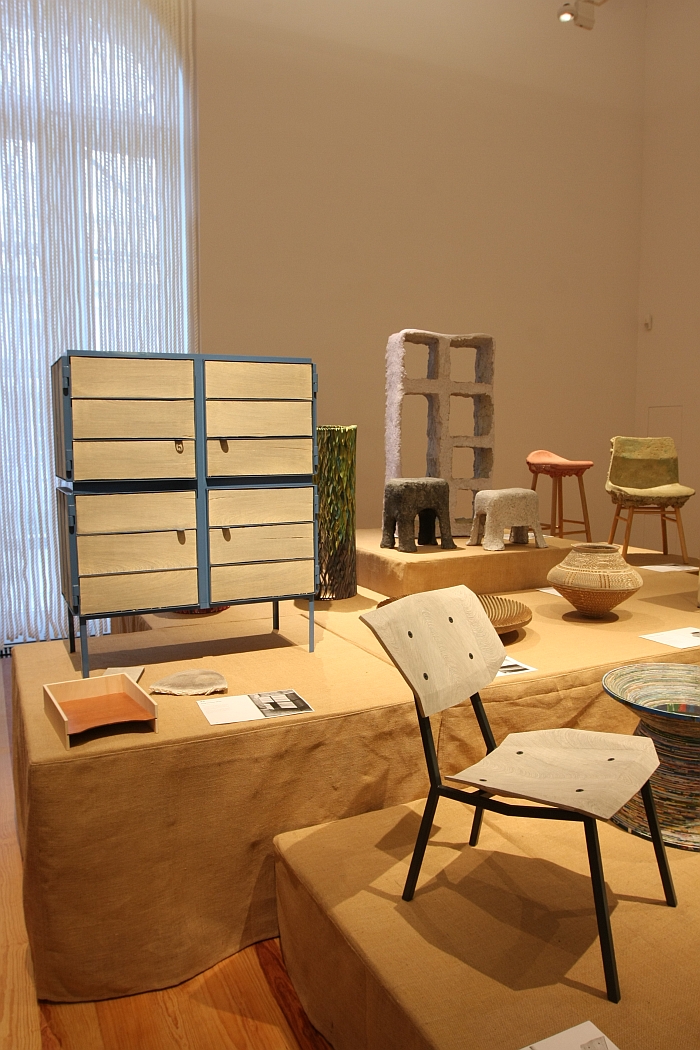
New Hybrids Newspaperwood chair by Mieke Meijer and Newspaperwood Framed Cabinet by Breg Hanssenl, as seen at Pure Gold. Upcycled! Upgraded!, Museum für Kunst & Gewerbe Hamburg
Reuse, re-appropriation of old, waste, materials, objects isn’t new, is however, in context of humanity, relatively new; our Stone Age forebearers, for example, were largely untroubled by the subject. The rise of industrial production, and for all globalised industrial production, brining with it the increasing problem of waste. And for all what to do with it. A problem which over the centuries has become ever more acute, as we slowly realise we just can’t keep on burying it.
Exploring that problem is for us the real strength of Pure Gold.
Just as the Museum für Kunst und Gewerbe’s exhibition Food Revolution 5.0. Design for Tomorrow’s Society lays bare the current unsustainability of global farming and the inescapable fact that we need to change our relationship to food consumption and production, so to does Pure Gold highlight that contemporary production and consumption patterns in terms of general consumer goods are unsustainable. And that the onus is on us to consume less, to consume better and also on manufacturers to produce less, to produce better.
It doesn’t do so directly, and indeed Pure Gold can be viewed simply as a collection of engaging and original objects, but that would be a wasted opportunity.
Much more we would encourage all visitors to question why the objects before you are before you? If they need to exist? If we changed the way we produced and consumed would the conditions that caused them to exist cease? And if not, if the waste is unavoidable, is the process developed to deal with the waste meaningful? And if so how can it be more widely employed? And if not, what are the alternatives?
Which is a lot of questions, but then as society we currently need a lot of answers.
And believe us people, they’re not answers Siri, Alexa or Cortana have….
……..Pure Gold might just, while at the same time ably demonstrating that he who has waste, and knowledge of how to work with it, need never fear being without.
Pure Gold. Upcycled! Upgraded! runs at Museum für Kunst und Gewerbe Hamburg, Steintorplatz, 20099 Hamburg until Sunday January 21st
Full details, including information on all the designers/projects and on the accompanying workshop programme can be found at http://puregold.ifa.de/
A few impressions, whereby we’re not saying we like, far less approve, of all the projects illustrated, it’s just our impression and understanding of the exhibition…
- Pure Gold. Upcycled! Upgraded!, at Museum für Kunst Gewerbe Hamburg
- New Hybrids Newspaperwood chair by Mieke Meijer and Newspaperwood Framed Cabinet by Breg Hanssenl, as seen at Pure Gold. Upcycled! Upgraded!, Museum für Kunst Gewerbe Hamburg
- Frankfurter Mélange by Silvia Knüppel, as seen at Pure Gold. Upcycled! Upgraded!, Museum für Kunst Gewerbe Hamburg
- Maggi Gruppe Bär + Knell, as seen at Pure Gold. Upcycled! Upgraded!, Museum für Kunst Gewerbe Hamburg
- Palmarin Chiar Ramon Llonch/Artlantique, as seen at Pure Gold. Upcycled! Upgraded!, Museum für Kunst Gewerbe Hamburg
- Endless Chair by Dirk Vander Kooij, as seen at Pure Gold. Upcycled! Upgraded!, Museum für Kunst Gewerbe Hamburg
- Fossili Moderni Massimiliano Adami, as seen at Pure Gold. Upcycled! Upgraded!, Museum für Kunst Gewerbe Hamburg
- Pure Gold. Upcycled! Upgraded!, at Museum für Kunst Gewerbe Hamburg
- Knit-Knacks by Junk Munkez, as seen at Pure Gold. Upcycled! Upgraded!, Museum für Kunst Gewerbe Hamburg
- Starfish Chair by Wang Shumao, as seen at Pure Gold. Upcycled! Upgraded!, Museum für Kunst Gewerbe Hamburg
- Free Range Stool by El Ultimo Grito, as seen at Pure Gold. Upcycled! Upgraded!, Museum für Kunst Gewerbe Hamburg
- Joining Bottles by Micaella Pedros, as seen at Pure Gold. Upcycled! Upgraded!, Museum für Kunst Gewerbe Hamburg
- Stabelle, überarbeitet by breadedEscalope, as seen at Pure Gold. Upcycled! Upgraded!, Museum für Kunst Gewerbe Hamburg
- Digestion No 1 by Matali Crasset, as seen at Pure Gold. Upcycled! Upgraded!, Museum für Kunst Gewerbe Hamburg
- Dogon Stool by Hamed Ouattara and Rocking Chair by Dhara Kabaria/Studio Alternatives, as seen at Pure Gold. Upcycled! Upgraded!, Museum für Kunst Gewerbe Hamburg
- Beam armchair with cushions by Piet Hein Eek, as seen at Pure Gold. Upcycled! Upgraded!, Museum für Kunst Gewerbe Hamburg
- Pure Gold. Upcycled! Upgraded!, at Museum für Kunst Gewerbe Hamburg
- Pure Gold. Upcycled! Upgraded!, at Museum für Kunst Gewerbe Hamburg
Tagged with: Hamburg, Museum für Kunst & Gewerbe, Pure Gold. Upcycled! Upgraded!, recycling, upcycling
